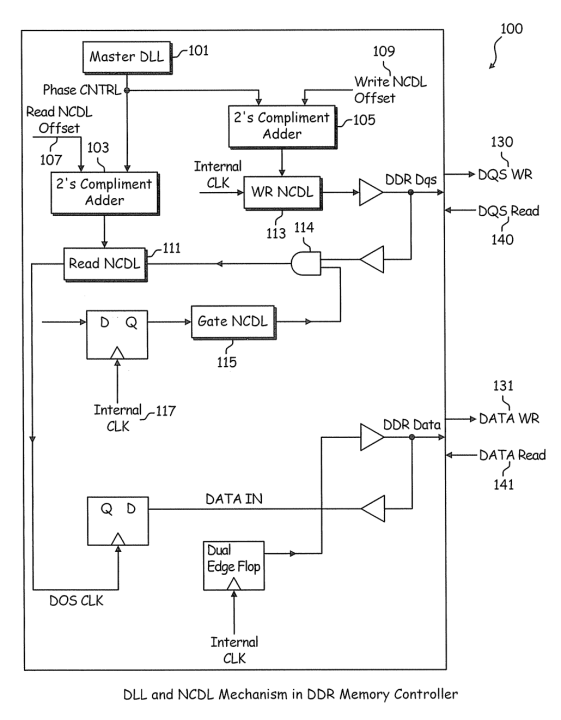NASA Technology Transfer
The National Aeronautics and Space Administration is commonly associated with space shuttles, the Apollo 11 Moon landing, and unmanned missions to Mars. However, NASA’s work is also relevant to everyday life on our home planet.
NASA studies our planet, Sun, solar system and beyond, but America’s space program is closer to home than you may think. You can find thousands of NASA-influenced technologies right in your backyard…NASA’s collaboration with commercial companies has helped bring space technology back to Earth for over 50 years.
Source: NASA Home & City | New Interactive Website Traces Space Back to You
NASA spinoff technologies are commercial products derived from NASA technology, of benefit to astronauts and ordinary Earth-bound humans alike. NASA itself doesn’t manufacture, market, or sell commercial products. Their technologies are frequently adapted by private industry for consumer use. Memory foam, for example, was invented by NASA researchers. NASA scientists and engineers also contributed to the refinement of freeze-dried food technology, prosthetics and artificial limbs, and invisible braces.
The NASA Technology Transfer Program “ensures that innovations developed for exploration and discovery are broadly available to the public“ by enabling companies to license patents granted to the government agency.
How does this patent licensing process work, and what are the most common components of a NASA license agreement? How can we further explore the ways in which NASA’s innovations are “broadly available” and beneficial to the public (i.e. reaching across industries, with a variety of applications)?
Patent Licensing Process
There are four steps to licensing NASA technology: finding a technology, applying for a license, setting the terms of the agreement, and signing the license.
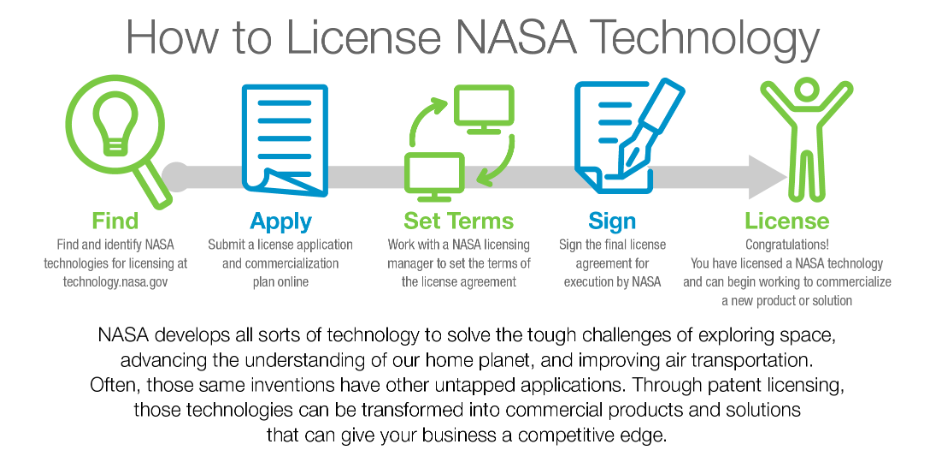
1. Find a technology
Using NASA’s Technology Transfer Portal, businesses and people can look through NASA’s categorized and searchable patent portfolio.
2. Apply for a technology license
NASA has an Automated Technology Licensing Application System, which guides applicants through every step of the licensing process. Licenses can be:
- a Standard Commercial License, available to domestic and international organizations;
- an Evaluation License, which grants short-term permission (usually lasting one year) to explore the potential of a technology – but licensees are not allowed to actually commercialize or sell the technology; or
- a Startup License, which offers a license with no up-front costs. Licensing fees are waived until the company starts actually selling a product. This agreement is only available to companies in the United States.
3. Set terms for the agreement
After submitting an application, the terms of the agreement are worked out with the NASA license manager. Costs will vary depending on the rights granted (single technology or group of technologies), exclusivity, and territory (worldwide or in a particular geographic region).
There are three components to licensing fees:
- An upfront fee: a lump sum payable upon signing the agreement. NASA recovers some of its investment in patent filing and maintenance costs through these upfront fees.
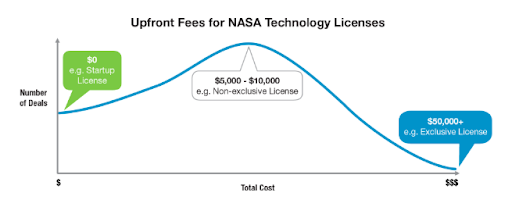
- Yearly minimum royalties: these fees help to ensure that licensees are actively working toward commercial applications of the technology NASA is licensing to them.
- Running royalty rate: generally ranging from 3-7% of revenue, these fees are based on the maturity of the technology, industry applications, and exclusivity.
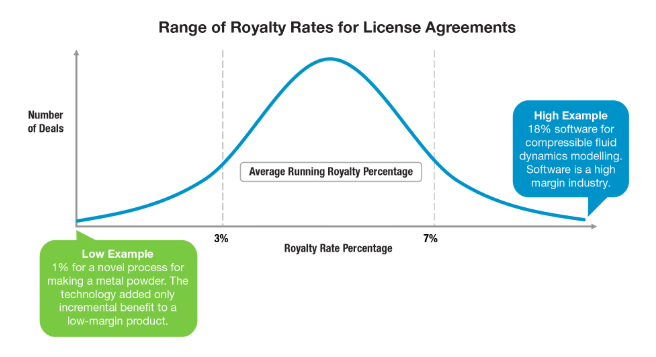 We can break down a real-life example of these three common license fee components in an agreement from ktMINE’s Royalty Rate database.
We can break down a real-life example of these three common license fee components in an agreement from ktMINE’s Royalty Rate database.
An agreement between NASA and Digital Manufacturing, Inc. granted Digital Manufacturing the right to use NASA’s technologies as then covered by U.S. Patent Application Serial No. 08/410,625, High performance circularly polarized microstrip antenna.



As seen in the full-text excerpts below, this agreement included all three expected components of licensing fees:
(a) an upfront fee of $8,000 [see Article 6, Section 1; and Appendix, item 5],
(b) specified minimum royalty payments (per year) of $3,000 [Article 6, Section 3; and Appendix, item 7], and
(c) a running royalty of 5% of net sales [Article 6, Section 2; and Appendix, item 6].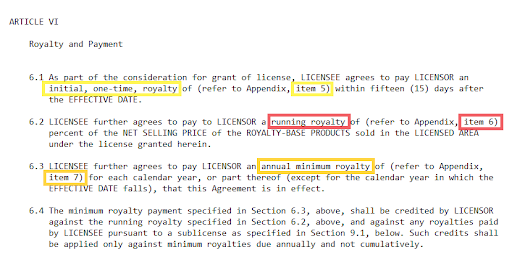
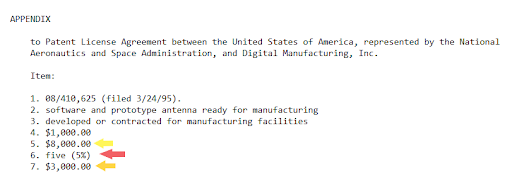
4. Sign the license
Once the license agreement is signed, NASA keeps track of sales of products and services that use the licensed technologies. NASA reports on success stories on their website and in their Spinoff magazine, a publication devoted to illuminating NASA technology applied to everyday life.
Trace Space Back to You
NASA’s vision is to “discover and expand knowledge for the benefit of humanity.” This vision is clearly reflected in the agency’s patent strategy (including their special licensing arrangements available to U.S. start-up companies), as well as in their public-facing promotion of how NASA innovations have much broader applications than space.
NASA aims to make its spinoff technologies more visible and understandable to the layperson through its Home & City website, which underwent a significant redesign in 2018.
Clicking through City > Manufacturing > Power Plant Design, for example, results in a pop-up summarizing NASA’s contributions to power plant design through software development.
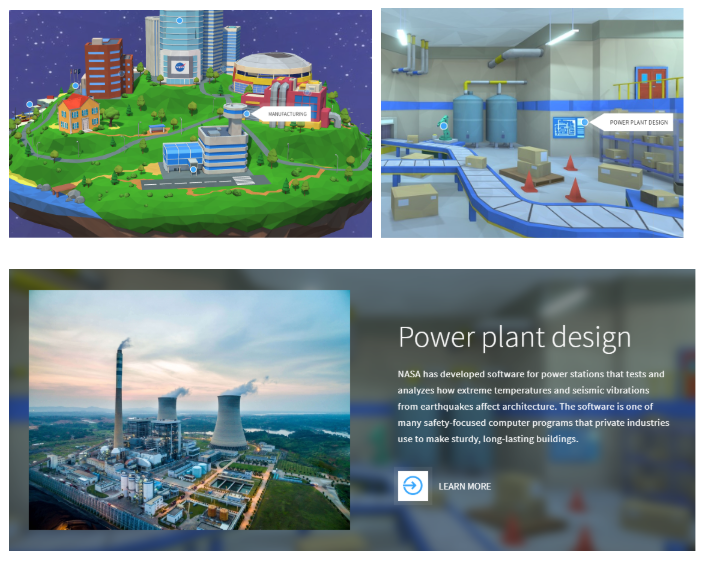
Readers can also access more information on the subject through the “learn more” button and find links to relevant Spinoff articles.
Freeze-dried food technology – mentioned earlier in this post as one of NASA’s notable spinoff technologies – also makes an appearance on the Home & City site. (Try navigating to Home > Kitchen, and look through the cabinets.) The corresponding pop-up summarizes how NASA’s work to improve astronaut food quality led to the availability of freeze-dried foods for backpackers, emergency situations, and general long-term storage.
What other technologies do we have NASA to thank for? Peruse the Home & City site – you might find something surprising.




